We explore the potential of the smallest Tiger in Triumph’s line-up by riding it on some of the best roads in Dehradun.
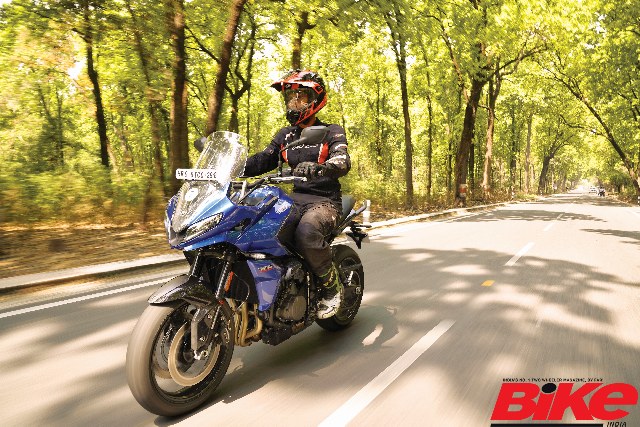
Adventure-touring is a concept that we have become familiar with over the past few years with the steady influx of new motorcycles from most manufacturers, but how well-known is the adventure-sport category? A considerable number of ADV motorcyclists rarely exploit the off-road capability of their motorcycles and these machines spend most of their time glued to the grippy and predictable tarmac. Then why not just make a motorcycle that combines the benefits of an ADV and the characteristics of a sportster that allows one to utilize the best of both worlds with a singular purpose: making riding on the road exciting yet comfortable. That’s what Triumph have set out to do with the Tiger Sport 660.
To validate this claim, we were invited to test-ride this motorcycle on the long, winding roads that lead out of Dehradun and into the mountains. Before I set out, some time was spent in observing the smallest Tiger in Triumph’s line-up. While a few may dismiss this motorcycle as a Trident on stilts, I believe the Tiger Sport has its own identity. Unlike the rugged, go-anywhere styling of the larger Tigers, the Tiger Sport has a sharper, more civilized design that betrays its sporty character. The twin LED headlights are unique for the Tiger Sport and are set in an angular half fairing that has more in common with a sport bike than an ADV. The fuel-tank is a large and shapely unit, similar to the larger Tigers’, while the tail section has been reworked to support pillion riding and luggage duties. Two small pieces of fairing bearing the “Tiger Sport” legend flank the radiator and round off this motorcycle’s road-biased styling. The lower half of the bike has been left exposed and the front is dominated by the traditional triple exhaust header pipes
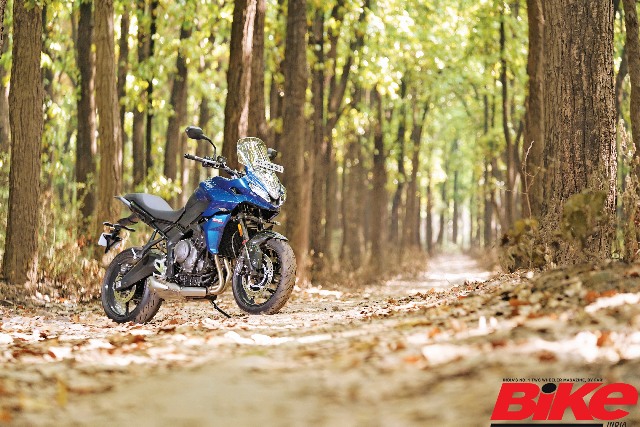
.My eyes lingered for a moment to take in the alarming number of fasteners around the clutch and magneto covers before moving on to check out the robust swing-arm and a minimalistic tail-end. Regardless of whether one likes the design or not, it is undeniably evident that this motorcycle was styled with the contemporary urban motorcyclist in mind.
The instrumentation is handled by a digital unit that is similar to the Trident’s, displaying all the information the modern rider needs, including the optional Bluetooth features provided by the “My Triumph” smartphone app. The various menus can be toggled through with ease using the switchgear on the left-hand side of the handlebar but a better level of quality is expected for this segment. Furthermore, Triumph have also provided a dedicated button for riding modes to choose between Road and Rain. Having been given a curated route in an unknown town, I promptly connected my phone to the console via the app (an easy procedure) and relied heavily on its turn-by-turn navigation feature. It wasn’t smooth sailing all the time, though, because the system has a few hiccups but it did help a great deal during the ride and there was very little to grumble about.
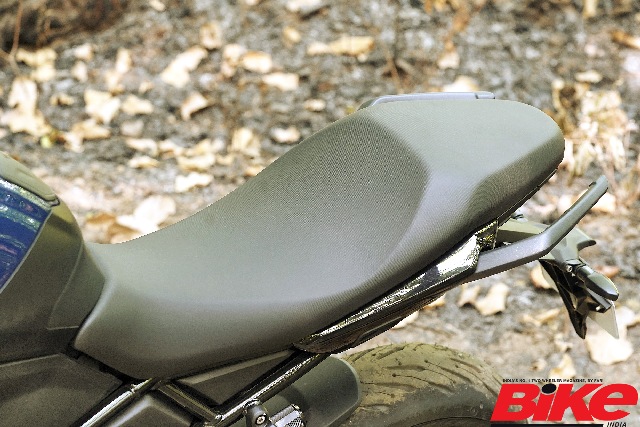
Being a tall human being, I personally prefer the riding position of the Tiger as compared to the Trident’s. One sits high up on the seat—835 millimetres, to be precise—enjoying a commanding view while reaping the benefits of a relaxed rider triangle. The wide handlebar allows enough leverage to provide steering input easily and the seat tapers off as it meets the fuel-tank, allowing most riders to comfortably place both feet on the ground. For those unable to do so, Triumph also offer a low seat as an accessory.
This Tiger is powered by the same engine that does duty in the Trident with no mechanical changes whatever. The 660-cc, liquid-cooled, in-line triple develops 81 hp at 10,250 rpm and a peak torque of 64 Nm at 6,250 rpm. The fuelling is spot on and the ride-by-wire system makes for easy and predictable throttle response. What I like best about this motorcycle is how simple it is to ride fast. One must appreciate what Triumph have done to make this platform easily accessible and friendly to new riders while also offering enough to keep the experienced ones entertained. Gear-shifts through the six-speed transmission are slick and are complemented by a reasonably light-action clutch. To spice things up on that front, one could buy the up-and-down quick-shifter and shift through the gears effortlessly while cruising through the city or tearing along the twisties.
When riding through town, I was thankful for this motorcycle’s generous, well-spread torque band. Triumph claim that 90 per cent of peak torque is delivered between 3,600 rpm and 9,750 rpm. Well-spaced gear ratios complement this tractability and allowed me to run the motorcycle comfortably in sixth gear even at 40 km/h, a blessing for city rides because not much gear-shifting is necessary.
Once past the hustle and bustle of the town, we hit an open road and the Tiger effortlessly adjusted to that as well. With the faintest of vibrations creeping in around the 7,000-rpm mark and becoming noticeable only closer to the red-line, the Tiger proved itself to be reasonably refined to handle long-distance riding. The unique exhaust note of the triple gets better as one explores the exciting end of the rev-range and it was music to my ears as I carved my way along some pristine riding roads outside Dehradun.
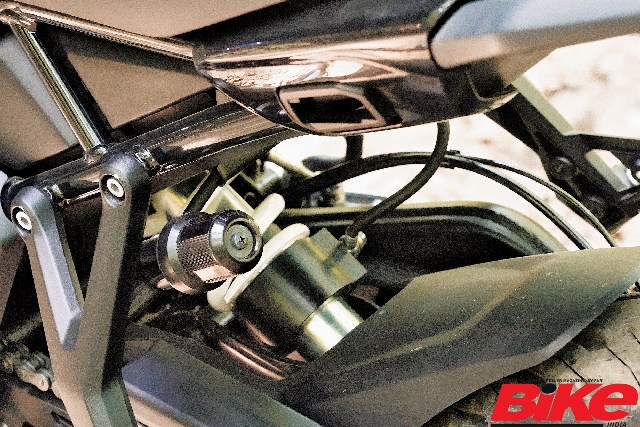
Triumph have retained the same suspension that does duty on the Trident for this one as well: a Showa fork at the front and a preload-adjustable monoshock at the rear. Of course, on the Tiger, they benefit from having longer-suspension travel: 150 mm at either end. The ride quality was decent within city limits because the suspension soaked up all the bumps and potholes nicely without upsetting me and was well settled on the highway, too, though at high speed, the ride becomes slightly bouncy at the rear. Although it is barely noticeable in most cases, one can feel it when banking into a corner at good pace but it is not an upsetting experience. It improved slightly when I adjusted the preload and that’s also an easy task because Triumph have provided a remote preload adjuster on the left side.
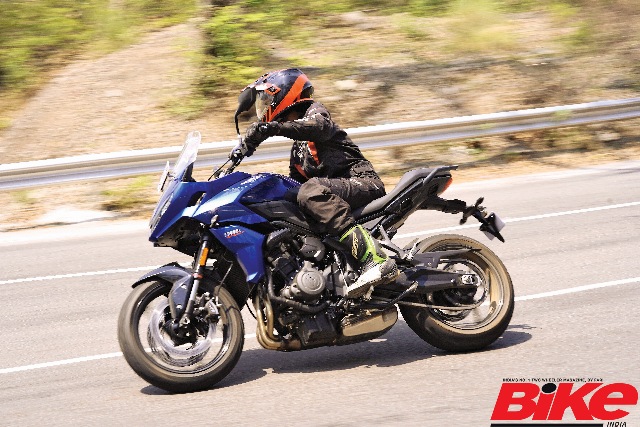
Part of my confidence in cornering with the Tiger came thanks to the phenomenal grip offered by the Michelin Road 5 tyres and that should settle this motorcycle’s commitment to tarmac once and for all. As I mentioned earlier, this is not an off-road motorcycle but neither does it shy away from the occasional excursion on a trail. It is friendly to ride standing up and one could indulge in some light off-roading. For example, when searching for picturesque locations away from the beaten track to click some photos for social media.
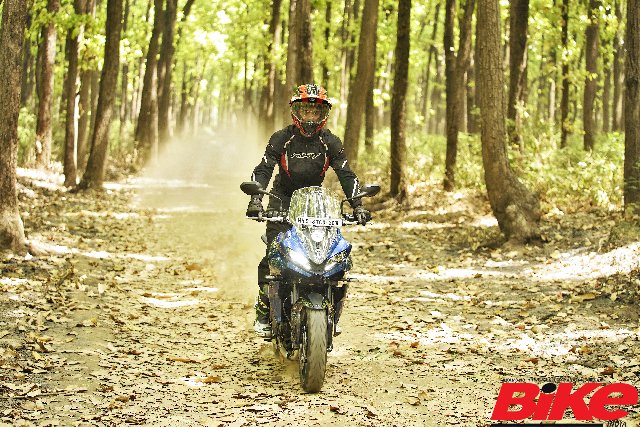
The Tiger Sport gathers pace fast and to slow down just as quickly it employs two 310-mm disc brakes at the front along with a pair of twin-piston Nissin calipers while a single disc handles braking duty at the rear. The bite is strong, the feel is predictable, and should one stretch the limits, there is dual-channel ABS to keep things in check. The traction control also had my back when I needed it most. Coming off a fast section of corners, I turned into a curve heading up a hill and the rear began sliding the moment I opened the throttle, forcing the traction control to cut in and bring the wheel back in line. This happened a few more times and it was only later that I found out that one section of the route had been re-laid with a plastic-based material, turning it into a low-traction surface as compared to ordinary tarmac. A decent initiative to manage plastic waste, no doubt, but a major sacrifice in terms of grip level. Thank God for electronics, eh?
My first ride experience with the Triumph Tiger Sport 660 included bits of everything that the motorcycle is intended for; busy streets, smooth straights, flowing corners, and broken roads. While the Tiger Sport 660 handled all of these with ease, there is nothing that it did exceptionally well. In simple terms, I feel this motorcycle is best described as “a jack of all trades but master of none” and I feel that is part of its charm. It is easy to ride at whatever pace one fancies and it lives up to all of its promise without being a handful in any sense of the word. It is a practical and exciting first step for someone entering the world of multi-cylinder motorcycles. Concurrently, it could also be a thrilling second motorcycle for an experienced rider who is eager to tap into the full potential of the smallest of Tigers.
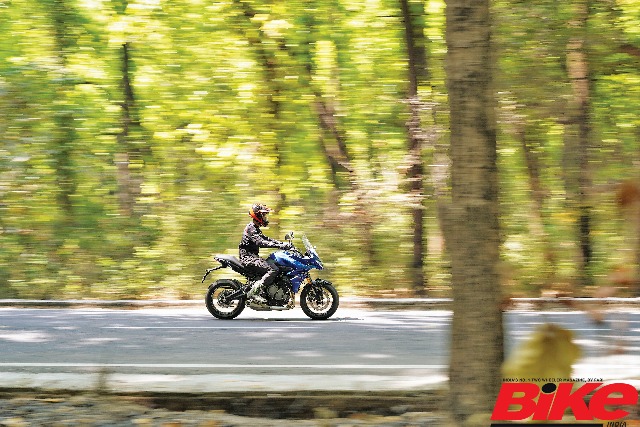
The Triumph Tiger Sport 660 is priced at Rs 8.95 lakh (ex-showroom) which is almost Rs 1.5 lakh more than the Trident. Meanwhile, its rivals, namely the Kawasaki Versys 650 and the Suzuki V-Strom 650XT are priced at Rs 7.15 lakh and Rs 8.88 lakh respectively (ex-showroom). When compared to the competition, this Tiger does appear to be overpriced and it remains to be seen if it will amass the kind of popularity that the Trident enjoys in our market today. That said, the Tiger Sport has made a commendable first impression by living up to expectations. If only this motorcycle were priced at less than Rs 10 lakh on-road, it would have been accessible to a larger spectrum of riders.
Watch the video of the first ride review:
Also Read: Yamaha YZF-R15 version 4.0 Tested Review

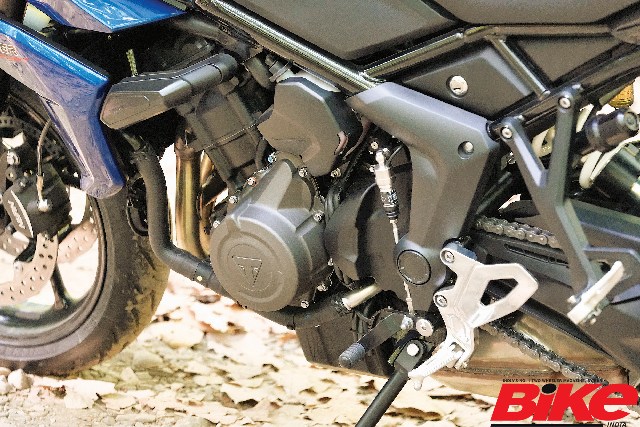
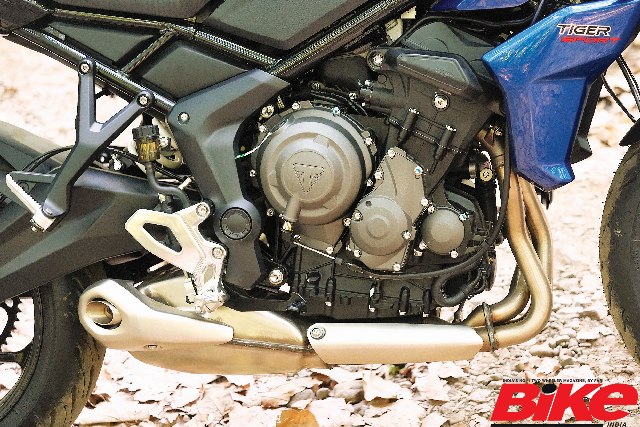

[…] Also read: Triumph Tiger Sport 660 Need to Know […]